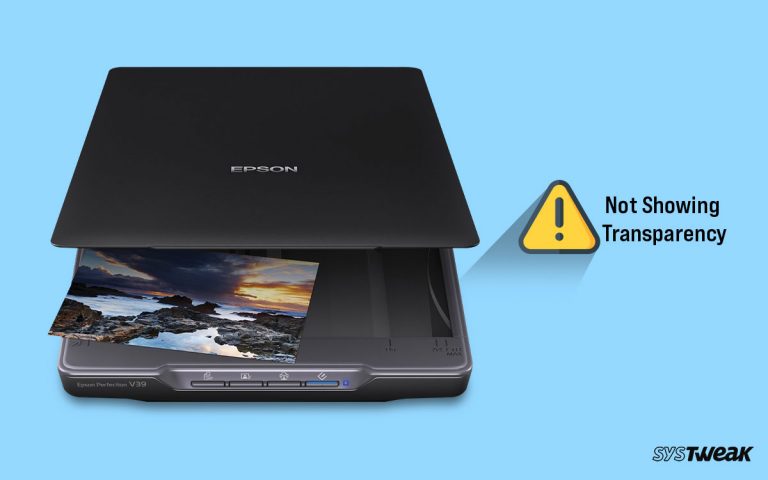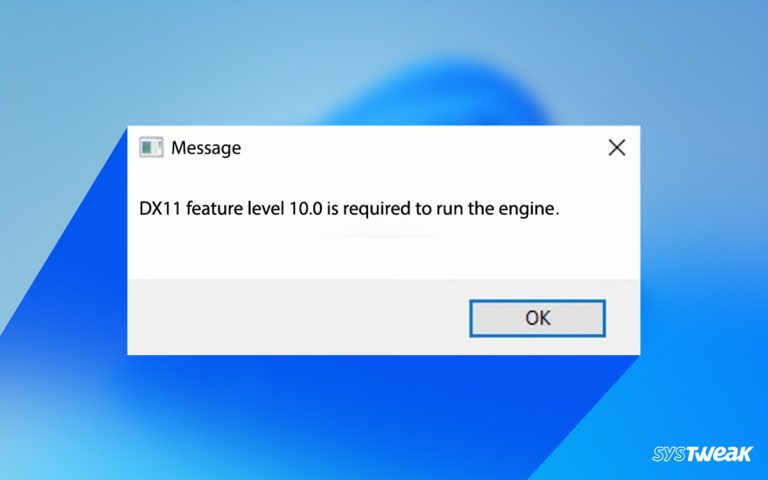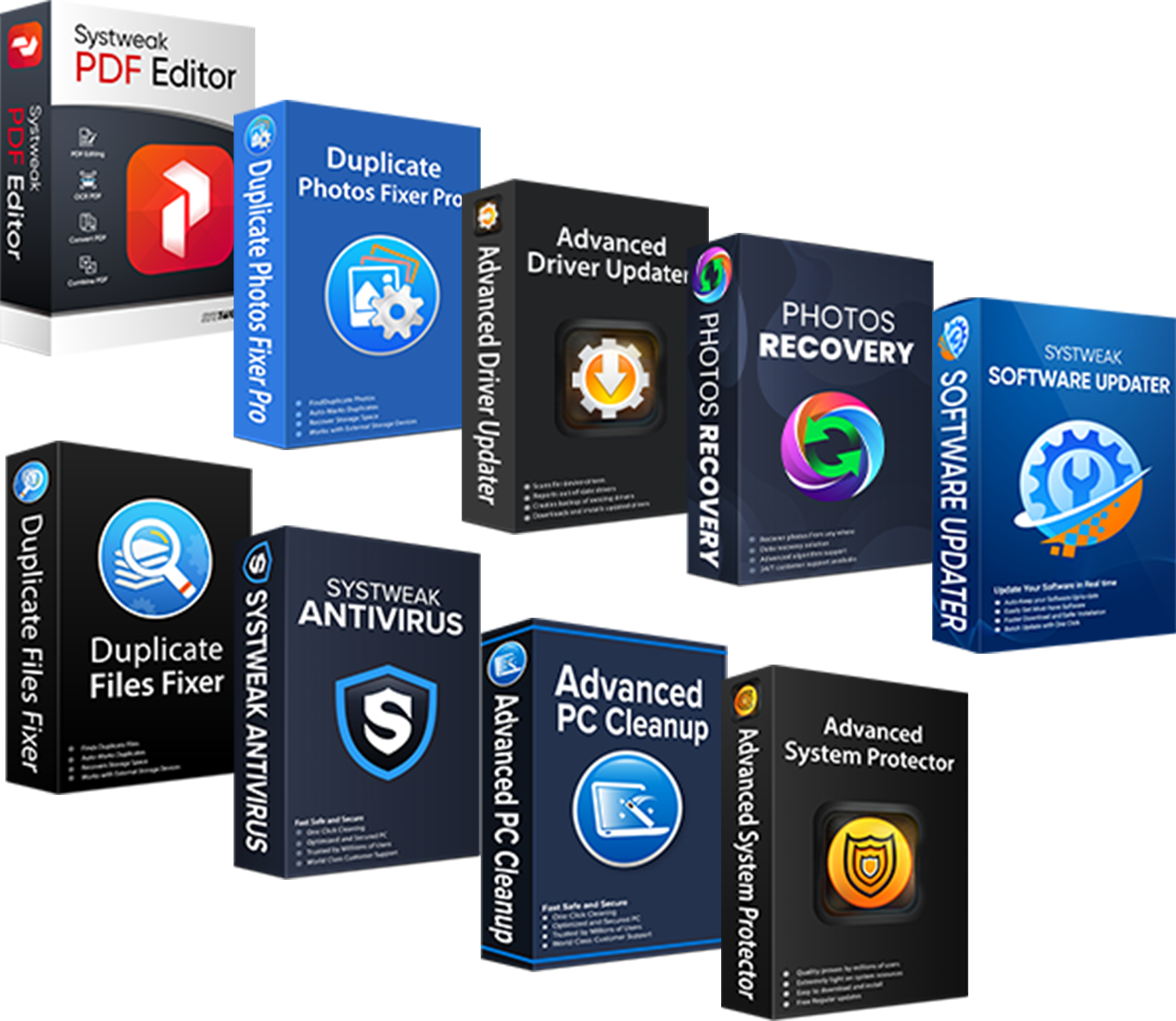Motherboard drives are needed to control major system functions and maintain system performance. They act as a software interface between computer hardware and system software. Therefore, to help the system function properly, keeping the motherboard drivers updated is required.
50% OFF

BLACK FRIDAY OFFERS
Unlock Black Friday Mega Savings — Systweak Tools FLAT 50% OFF!
To update the motherboard driver, an individual must know the manufacturer’s details and model number. For beginners collecting all these details is not easy. Understanding this, in this post, we will learn how to update the motherboard driver on Windows 11, 10.
Before getting into details, let us understand the most common types of motherboard drives.
The Common Type of Motherboard Drivers: –
- Network Driver – used to control functions of a device that connects a computer or laptop to a network.
- Chipset Driver – a small file the operating system requires to identify the motherboard attached to the system. These drivers are usually found on a CD or some other media.
- Sound Driver – helps in sending audio information to the output device. It usually installs PCIe and PCI slots into the motherboard.
Read More:- How to Fix Realtek Audio Issues in Windows 11, 10
- Video Driver – a program that allows the operating system and graphics applications to communicate.
Read More:- How To Update Video Drivers On Windows 11, 10
- Wi-Fi Driver – a program that allows connecting to Wi-Fi.
Read More:- How To Update Wi-fi Driver on Windows 11, 10
Now, we know about the common types of motherboard drivers. Let us learn how to update mobo drivers.
Why Should You Update Motherboard Drivers?
Many users have queries about why it is important to update motherboard drivers. Usually, motherboards do not require driver updates, considering the hardware will not change throughout your use.
However, there have been situations when motherboard manufacturers left a few loose ends in the chip before shipping and later realized that these must be fixed. In such situations, the best they can do is roll out a few driver updates for the motherboard’s components.
Hence, checking your motherboard drivers for updates is important as it only means that the performance of your computer might get an upgrade. While the chances of it happening are significantly low, there’s no harm in trying the update.
Top Ways To Update Motherboard Drivers
Motherboard drivers can be updated in two ways – automatic and manual. You can either try both or can pick any based on your liking. Just work your way down to learn about each method.
Note : Manual method is time-consuming and requires patience, while the automatic way is quick and easy. Also, to update the chipset driver manually, you need information about the operating system and the device’s model number. Whereas for the automatic method, no such information is required. The best driver updater - Advanced Driver Updater, will automatically scan the system and find outdated drivers. Not only this, it will show you the most compatible driver update without visiting the manufacturer’s website.
How To Update Chipset Drivers?
To learn how to update motherboard drivers, read the method explained below:
Tip : To get system information, press Windows R and type msinfo32 Enter. In the new window that opens, you will get all the system-related information.
See This- How to Fix PCI Modem Drivers Problems
Method 1 – Update Motherboard Driver Manually
You must visit the manufacturer’s website to download and install the motherboard drivers manually. To learn how to do that, follow these steps:
1. Visit the official website of the motherboard manufacturer.
2. Search for the motherboard model number.
3. Head to the driver download page and download the correct driver based on your operating system.
Tip : To avoid facing any issues, download drivers for all the components of the motherboard.
4. Once the driver is downloaded, go to the location where you have saved the driver. Double-click the .exe file and follow the on-screen instructions to install the driver. If it is a zipped file, you must unzip it and then click on the .exe file to install the driver update for motherboard drivers.
5. Restart the PC after updating mobo drivers. This helps apply changes.
Method 2 – Download and Install Motherboard Driver Automatically
If you cannot locate the correct driver update or are afraid of downloading an incorrect driver, you can do it automatically using Advanced Driver Updater.
You don’t need to know the exact system configuration or motherboard details to use this best driver updater. The professional driver updating tool will do that independently. Also, using it will eliminate the risk of downloading the incorrect drivers. So, without worrying about making a mistake, use Advanced Driver Updater.
This Windows driver updater will take care of the rest. Also, as a precautionary measure, it takes a backup of old drivers before updating them.
Must Read- How to Download and Update PCI Device Drivers for Windows 11,10
To use Advanced Driver update and update motherboard drivers, follow the steps below:
1. Click the download button to get Advanced Driver Updater
2. Double-click the downloaded .exe file to install the tool.
3. Run Advanced Driver Updater > Start Scan Now

4. Wait for the driver updating tool to scan the system for outdated and problematic drivers.
5. Once you have the scan results, click the Update driver next to the motherboard.

Note: If you have the Pro version of the product, you can update all outdated drivers at once by clicking Update All. However, using the trial version, you must update each driver individually. What’s more? The registered version has a 60-day money-back guarantee and a team of trained technical support personnel.
6. After updating the driver, restart the system. The motherboard driver should now be updated.
Check This- How to Download & Update Realtek PCIe GbE Family Controller Driver
FAQ
Q1. How to find out which Motherboard I have?
Here’s how to identify the motherboard details –
- Go to your start menu and type Command Prompt.
- Run it as administrator.
- In the command prompt, use the command – wmic baseboard to get product, Manufacturer.

- You will have the output showing you the details related to your PC.
Q2. Are Motherboard Drivers Necessary?
Yes. If motherboard drivers are unavailable, the entire system might collapse.
A driver’s primary function is to create an interface between a hardware device and the operating system. If the motherboard does not have appropriate drivers, it might be unable to communicate with the desired OS. This nullifies the purpose of using a motherboard.
Motherboard drivers are as necessary as the motherboard is for your PC. Without these drivers, you cannot perform even the most basic tasks. A motherboard is the foundation of your computer, and it is the heart of your CPU.
Update Motherboard Drivers
We hope we can answer how to update the Windows 11, 10 chipset driver. You can use any of the methods as explained. If you are a novice or short on time, an automatic method using Advanced Driver Updater is best. However, if you have some technical knowledge and think you can update the driver independently, you can try the manual method.
Let us know which method you picked and why in the comments section. If you have any questions regarding the product, email us at support@systweak.com. If you find the post helpful, share it with others. In case you have some suggestions, do let us know. We love to hear from you.
Next Read –
Identifying if Your PC Drivers Need Updates! Is there a Way?
10 Things You Wish You Knew Before Updating Device Driver





